Swim tracker water ratings determine whether your device can survive underwater activities without suffering irreversible damage. You’ll need at least 5 ATM (50 meters) for pool swimming and 10 ATM (100 meters) for extended swimming sessions. These ratings protect against static pressure in laboratory conditions, but real-world swimming creates dynamic forces that can compromise even well-rated devices. Understanding these classifications helps you choose appropriate trackers and avoid costly replacements while discovering essential maintenance strategies.
Understanding ATM and Meter Water Resistance Classifications
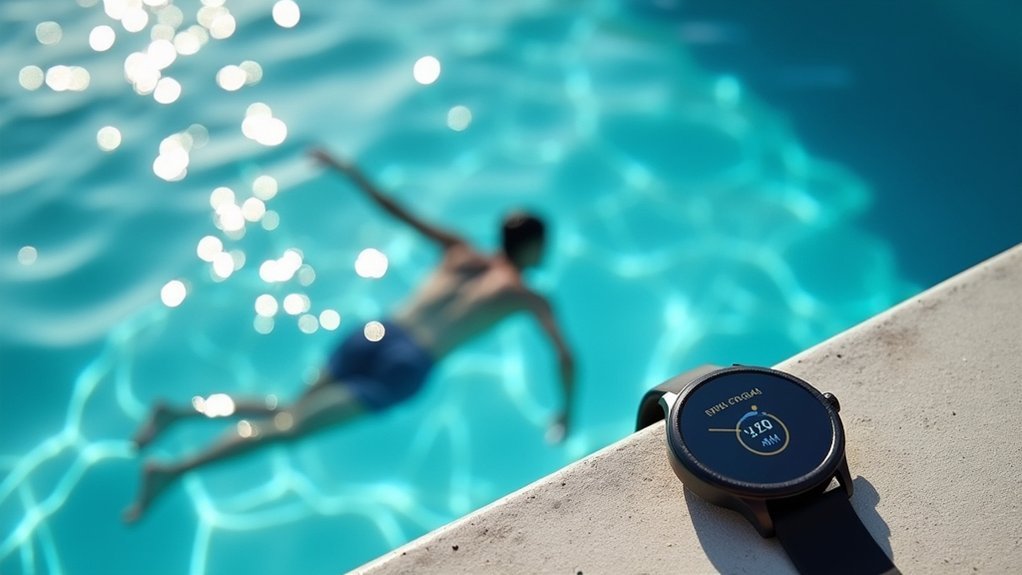
When you’re shopping for a swim tracker, you’ll encounter two main water resistance classifications: ATM and meter ratings.
ATM stands for “atmosphere” and measures pressure, with 1 ATM equaling atmospheric pressure at sea level. Each ATM converts to roughly 10 meters of water depth, so a 5 ATM device can handle 50 meters of depth.
Meter ratings directly indicate depth capacity. A 30-meter rating suits accidental splashes, while 50 meters handles brief shallow water immersion. For swimming, you’ll want 100 meters or higher.
Both ratings are tested under controlled lab conditions using static pressure, which doesn’t perfectly reflect real-world scenarios where movement and temperature changes create dynamic pressure variations that can affect your tracker’s performance. Regular gasket replacement helps maintain your device’s water resistance over time.
How Laboratory Testing Creates Water Resistance Standards
You’re probably wondering how manufacturers determine those ATM ratings on your swim tracker’s specifications.
Laboratory technicians use static pressure testing methods that simulate underwater conditions by applying controlled water pressure equivalent to specific depths.
These standardized ATM rating procedures follow ISO 22810:2010 protocols, where your device gets subjected to precise pressure levels that correspond to real swimming and diving scenarios. Consumer Reports conducts their own baseline tests in pressurized immersion tanks to verify manufacturer claims.
Static Pressure Testing Methods
Before any swim tracker earns its water resistance rating, it must undergo rigorous static pressure testing in controlled laboratory environments.
You’ll find this process involves gradually immersing sensors in controlled aquatic environments with known depth increments to measure corresponding pressure changes. Labs collect data by plotting pressure versus depth, often achieving near-perfect linear correlation with R² values of 0.9999.
During testing, you’ll see samples taken while both lowering and raising sensors to verify consistency and eliminate hysteresis. Multiple sensors can be tested simultaneously to guarantee cross-sensor reliability.
These controlled conditions maintain stable ambient factors like pool depth and temperature, isolating pressure as the main variable. The results establish calibration curves and correction factors that standardize readings across different devices and brands.
Testing protocols typically require maintaining maximum test pressure for extended periods to detect potential seal failures that might not be apparent during brief exposure cycles.
ATM Rating Standards
While static pressure testing provides the foundational data, ATM rating standards transform those laboratory measurements into standardized water resistance classifications that manufacturers use across the industry. These ratings represent atmospheric pressure units, where each ATM equals roughly 10 meters of underwater depth.
| ATM Rating | Depth Equivalent | Recommended Use |
|---|---|---|
| 3 ATM | 30 meters | Splashes, rain only |
| 5 ATM | 50 meters | Swimming pools, surface activities |
| 10 ATM | 100 meters | Snorkeling, extended swimming |
| 20 ATM | 200 meters | High-impact water sports, diving |
| 30+ ATM | 300+ meters | Professional diving activities |
You’ll notice these standards focus on static pressure resistance under controlled laboratory conditions. However, they don’t account for dynamic pressures from movement or environmental factors like temperature changes that affect real-world performance. It’s important to understand that testing methods vary between manufacturers, and passing an ATM rating test doesn’t guarantee complete water resistance in all situations.
Protecting Your Investment From Water Damage
When you understand ATM pressure ratings, you’re taking the first step toward safeguarding your swim tracker investment from irreversible water damage.
You can prevent costly repairs by respecting your device’s limitations and avoiding activities that exceed its rated capacity.
Maintaining your tracker’s long-term integrity requires consistent care and adherence to manufacturer guidelines, ensuring years of reliable performance. Remember that water resistance ratings apply to short periods only, not extended underwater exposure.
Understanding ATM Pressure Ratings
ATM pressure ratings determine your swim tracker’s ability to withstand underwater pressure, but they’re more complex than most people realize. ATM stands for Atmospheres, where each unit represents the static pressure at increasing depths—3 ATM equals 30 meters of pressure resistance.
| ATM Rating | Depth Equivalent | Suitable Activities |
|---|---|---|
| 3 ATM | 30 meters | Splash resistance, rain |
| 5 ATM | 50 meters | Swimming, showering |
| 10+ ATM | 100+ meters | Snorkeling, diving |
However, don’t mistake these ratings for actual diving depths. Laboratory tests use static pressure for brief periods, unlike real-world conditions with waves, movement, and temperature changes. Your 5 ATM tracker can handle swimming, but the rating reflects pressure tolerance, not guaranteed submersion limits under dynamic conditions.
Understanding these ratings is essential because water ingress can cause irreparable damage if the device’s seals fail during exposure to conditions beyond its rated capacity.
Preventing Costly Water Damage
Understanding your tracker’s water resistance ratings becomes meaningless if you don’t take steps to protect your investment from preventable damage.
Water damage creates significant financial losses through costly repairs, equipment replacement, and decreased asset value. Your swim tracker’s proper water rating prevents these expensive consequences by ensuring reliable performance in aquatic environments.
Early detection capabilities minimize damage when water exposure occurs unexpectedly. You’ll receive immediate alerts that enable rapid response, reducing repair complexity and maintaining device functionality. This proactive approach preserves your warranty coverage and prevents the need for premature replacement.
Data-driven monitoring supports long-term investment protection by tracking performance indicators and identifying potential issues before they become costly problems. Professional facilities utilize attendance patterns to optimize equipment placement and reduce exposure risks during peak usage periods.
You’re fundamentally using proper water ratings as a risk assessment tool that informs maintenance planning and protects your financial investment.
Maintaining Long-Term Device Integrity
Since water damage represents the greatest threat to your swim tracker’s longevity, maintaining proper device integrity requires consistent attention to your tracker’s protective barriers and usage patterns.
You’ll need to regularly inspect gaskets and O-rings for wear while following manufacturer guidelines for seal maintenance. Rinse your device with fresh water immediately after swimming in chlorinated pools or salt water, as these environments accelerate chemical degradation of protective seals.
Don’t press buttons underwater unless your tracker’s specifically rated for it, and avoid exposing your device to hot water or steam that can compromise waterproof barriers faster. Look for devices with a minimum 5ATM rating to ensure safe submersion up to 50 meters during your swimming activities.
Store your tracker in dry conditions at room temperature to prevent moisture accumulation. By choosing a device rated well beyond your intended swimming depths, you’re creating a safety margin that protects your investment from unexpected water exposure scenarios.
Real-World Swimming Conditions vs. Static Pressure Testing
When you take your swim tracker into the pool or open water, you’re subjecting it to conditions far more demanding than the controlled environments used for standard water resistance testing.
Static pressure tests use pressurized chambers that can’t replicate water movement, turbulence, or temperature fluctuations you’ll encounter while swimming.
Your device might pass a 5 ATM rating test but still struggle with sensor accuracy during actual swim workouts.
Water presence greatly alters sensor performance, causing increased measurement variability and wider confidence intervals for heart rate monitoring.
The constant movement, stroke patterns, and pressure variations create challenges that static testing simply can’t predict.
That’s why real-world swimming validation matters more than laboratory ratings when choosing a reliable swim tracker. Most quality swim trackers are water-resistant up to 50m, providing sufficient protection for pool and open water swimming activities.
Decoding Common Water Resistance Ratings for Swimmers
Although manufacturers label swim trackers with ratings like 50m or 5ATM, these numbers don’t mean you can safely dive to those depths while wearing your device.
These ratings come from static pressure tests, not real swimming conditions where water pressure changes constantly.
Here’s what each rating actually means for swimmers:
- 30m/3ATM – Basic splashes and hand washing only
- 50m/5ATM – Light swimming at surface level for short periods
- 100m/10ATM – Snorkeling and poolside diving without deep submersion
- 200m/20ATM – Recreational scuba diving under controlled conditions
Water resistance can also be compromised by factors like temperature changes, worn seals, or physical damage to the device over time.
The Myth of Waterproof Technology in Wearable Devices
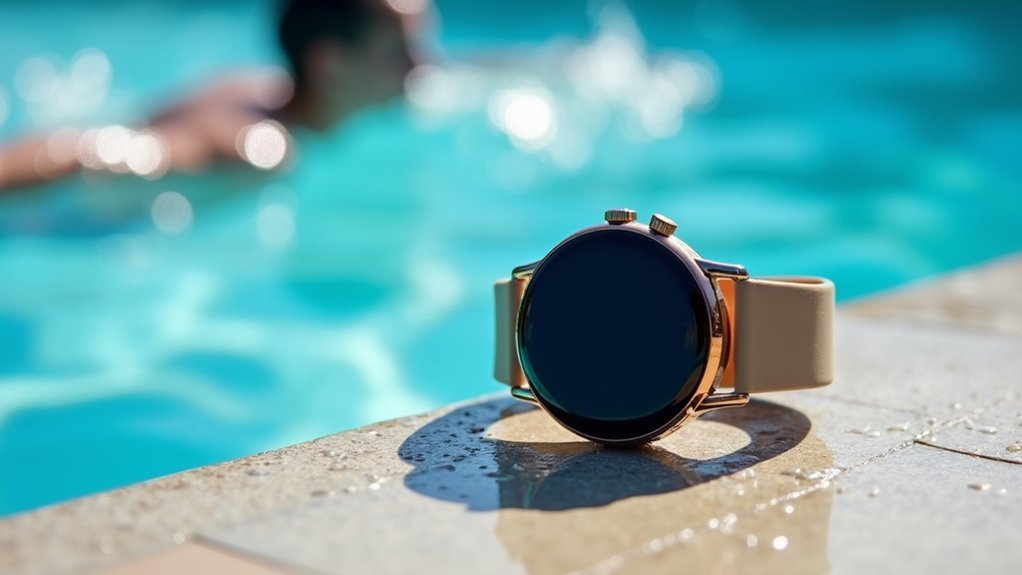
You’ve probably seen swim trackers marketed as “waterproof,” but here’s the reality check: most devices are only water-resistant, not truly waterproof.
Marketing teams love to blur this distinction because “waterproof” sounds more impressive than “can handle splashes and brief submersion.”
Understanding this difference could save you from watching your expensive tracker fail during that ocean swim you’ve been training for. Professional-grade devices typically achieve weatherproofing through IP67/68 sealing, which provides specific levels of protection against water ingress but still has limitations.
Waterproof Vs Water Resistant
While swim tracker manufacturers often tout their devices as “waterproof,” this claim represents one of the most persistent myths in wearable technology. You need to understand that no wearable can guarantee permanent protection against water under all conditions without eventual degradation.
Here’s what you should know about the key differences:
- Water-resistant devices have specific limits based on pressure, depth, and exposure time under ISO standards.
- “Waterproof” is a marketing term that manufacturers use despite technical disclaimers clarifying actual limitations.
- International standards avoid “waterproof” because permanent protection isn’t technically possible for consumer wearables.
- Misunderstanding these terms leads to device damage from inappropriate use and voided warranties.
Understanding this distinction helps you select trackers based on your actual swimming activities rather than misleading labels. Most quality swim trackers feature 5 ATM ratings that indicate safe use for swimming and water sports at standard depths.
Marketing Claims Vs Reality
When manufacturers splash bold “waterproof” claims across their swim tracker packaging, they’re banking on your assumption that these devices can handle unlimited water exposure.
The reality? There’s no such thing as truly waterproof wearable technology.
You’ll find manufacturers strategically use terms like “waterproof” in marketing while fine print reveals actual ratings like 5ATM or IPX7.
These ratings don’t guarantee protection during dynamic swimming activities—they’re based on static laboratory tests that can’t replicate real-world conditions like ocean currents or pool chemicals.
Your device might survive shallow immersion but fail during vigorous swimming.
Manufacturers often exclude water activities from warranties despite marketing their trackers for swimming.
You’re left interpreting technical specifications that don’t match the bold promises on advertisements. The U.S. FTC has deemed “waterproof” an inappropriate term for any water-resistant device, yet companies continue using it in marketing materials.
Why Moving Water Creates Different Pressure Than Still Water
Water pressure behaves differently when it’s moving compared to when it’s still, and this difference directly affects how your swim tracker’s sensors perform.
In still water, pressure increases predictably with depth due to the water column’s weight above. However, moving water creates dynamic pressure variations that can throw off your device’s readings.
Here’s how moving water changes pressure dynamics:
- Flow velocity creates kinetic energy changes that alter pressure according to Bernoulli’s principle.
- Turbulence causes rapid pressure fluctuations against your tracker’s sensors during swimming.
- Water constrictions increase velocity while dropping pressure, affecting depth calculations.
- Horizontal flow forces add complexity beyond simple vertical gravitational pressure.
Your swim tracker must accommodate these rapid pressure changes to maintain accuracy in real swimming conditions. The continuous physical force exerted by flowing water on your device’s sensors creates additional challenges that static pressure testing cannot replicate.
Button Functionality and Water Ingress Risk Management
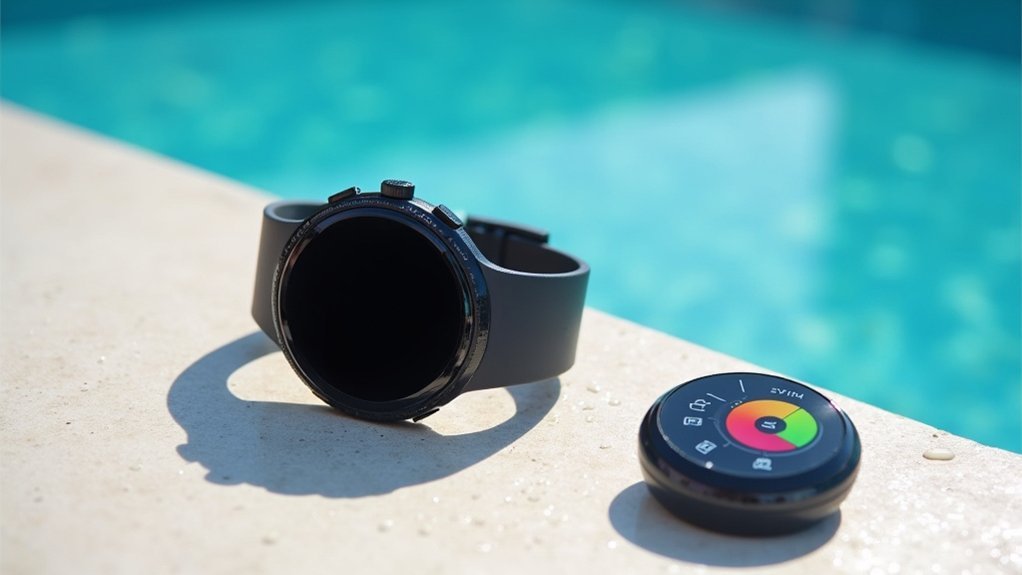
Beyond pressure variations that affect sensor accuracy, your swim tracker’s buttons present another critical vulnerability during water activities. Water can penetrate button areas and damage internal electronics, making robust sealing essential.
That’s why manufacturers design recessed, low-profile buttons with tight membranes to resist water entry and pressure.
Your device’s water lock feature automatically engages during swim mode, disabling button presses and touchscreen interactions. This prevents accidental activations from water turbulence while protecting against ingress caused by underwater button presses.
You’ll see water lock icons confirming active protection.
Post-swim, you’ll release through specific gestures like firm double taps. Devices meeting IPX8 ratings guarantee buttons withstand prolonged submersion, preventing early malfunction and preserving your tracker’s longevity through proper water ingress risk management. When issues do arise, community forums provide valuable troubleshooting support from experienced users who encounter similar technical challenges.
Saltwater vs. Chlorinated Pool Exposure Effects
While proper sealing protects against water ingress, the chemical composition of different swimming environments creates distinct challenges for your tracker’s materials and components.
Saltwater pools contain 3000-4000 ppm dissolved salt, creating corrosive conditions that can damage metal components and accelerate seal degradation through electrolytic properties.
You’ll need devices with titanium or stainless steel construction plus specialized gaskets.
Chlorinated pools present different risks through oxidative stress. Chlorine chemically reacts with plastics and elastomers, causing seal brittleness and crack formation over time.
Key protection strategies include:
- Choose trackers with 5 ATM+ water resistance ratings
- Select devices with corrosion-resistant materials and UV protection
- Rinse thoroughly with fresh water after each swim session
- Monitor seals regularly for degradation signs
Understanding your pool’s chemistry helps you select appropriate protection levels. Leading brands like Garmin and Apple have developed comprehensive testing protocols to ensure their devices can withstand these challenging aquatic environments.
Seal Degradation and Long-Term Water Resistance Performance
Even the highest-rated water-resistant swim trackers face an inevitable challenge: seal degradation that gradually compromises their protective barriers.
Your device’s rubber and silicone seals deteriorate over time through repeated water exposure, chemical contact, and thermal fluctuations that cause expansion and contraction.
Chlorinated pool water accelerates this breakdown process, while saltwater corrodes adjacent metal components, indirectly stressing your seals.
Each swimming session creates mechanical strain from flexing and water pressure, leading to microcracks that allow water ingress.
This degradation explains why manufacturers only warrant water resistance for specific timeframes. Water exposure concerns become particularly relevant after warranty expiration, when device protection may no longer be guaranteed.
As seals fail, your tracker loses its rated protection, risking irreversible damage to internal electronics.
You’ll preserve water resistance longer by rinsing with fresh water after swimming and avoiding harsh chemicals.
Choosing the Right Rating for Your Swimming Activities
Understanding these degradation patterns becomes especially important when you’re selecting a swim tracker, since you’ll want to match your device’s water resistance rating to your specific swimming activities.
Choosing the wrong rating can lead to water damage and compromised functionality.
Inadequate water resistance ratings can result in costly device failure and loss of essential fitness tracking capabilities.
Here’s how to select the appropriate rating for your swimming needs:
- Light pool swimming: 50m (5ATM) rating handles surface swimming and shallow water exposure adequately.
- Snorkeling and surfing: 100m (10ATM) rating withstands higher water pressures from dynamic water forces.
- Recreational scuba diving: 200m (20ATM) or higher guarantees durability during extended underwater activities.
- No swimming planned: 30m (3ATM) covers splashes and rain but isn’t suitable for submersion.
Remember that gaskets become brittle over time, so even the best water resistance rating will eventually deteriorate without proper maintenance.
Maintenance Tips to Preserve Water Resistance Over Time
Once you’ve selected the appropriate water resistance rating for your swimming activities, maintaining that protection becomes your next priority.
Rinse your device with fresh water after every swim to remove salt or chlorine buildup that can degrade seals over time. Avoid exposing your tracker to soaps, shampoos, and harsh chemicals while in water, as these substances compromise water resistance.
Let your device air dry completely after each use and regularly inspect gaskets for wear or damage. When cleaning, use a soft-bristled toothbrush to gently remove any debris from charging contact points and sensor areas.
Don’t wear your tracker during high-velocity water activities beyond its rating, and activate swim mode to enable water lock features.
Store your device in cool, dry conditions and perform annual maintenance checks to guarantee ongoing protection against water damage.
Frequently Asked Questions
Can I Wear My 3ATM Swim Tracker in a Hot Tub or Sauna?
You shouldn’t wear your 3ATM swim tracker in hot tubs or saunas. The heat exceeds operating temperatures, and steam can damage internal components despite water resistance, potentially causing irreversible failure.
Do Water Resistance Ratings Change at Different Altitudes or Elevations?
Water resistance ratings don’t change at different altitudes because they’re based on water pressure from depth, not atmospheric pressure. You’ll get the same 3ATM protection whether you’re swimming at sea level or high elevation.
Will Soap or Shampoo Affect My Swim Tracker’s Water Resistance Rating?
Soap and shampoo can degrade your swim tracker’s rubber seals over time, compromising water resistance. Their surfactants reduce surface tension, potentially allowing water penetration despite your device’s rating.
Can I Replace Water Seals Myself or Must Manufacturers Do It?
You shouldn’t replace water seals yourself since it requires specialized tools, precision, and expertise. Self-repair typically voids warranties and risks compromising water resistance, so manufacturers recommend professional service instead.
Do Fitness Bands Have Different Water Standards Than Dedicated Swim Trackers?
You’ll find fitness bands and dedicated swim trackers generally follow similar waterproofing standards like 5ATM, but dedicated trackers often feature enhanced durability and specialized aquatic capabilities for serious swimmers.
In Summary
You’ll protect your swim tracker investment by understanding water resistance ratings and choosing the right ATM classification for your activities. Don’t rely solely on laboratory testing standards—consider real-world conditions like pool chemicals and saltwater exposure. You’re responsible for maintaining seals and following manufacturer guidelines to preserve water resistance over time. Remember that ratings can degrade, so you’ll need regular maintenance and realistic expectations about your device’s long-term underwater performance capabilities.


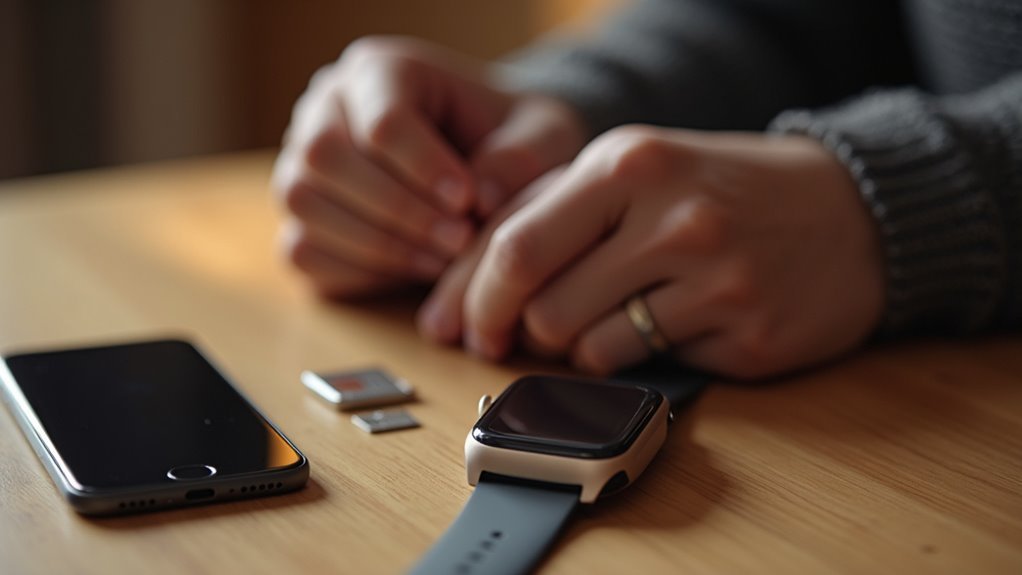
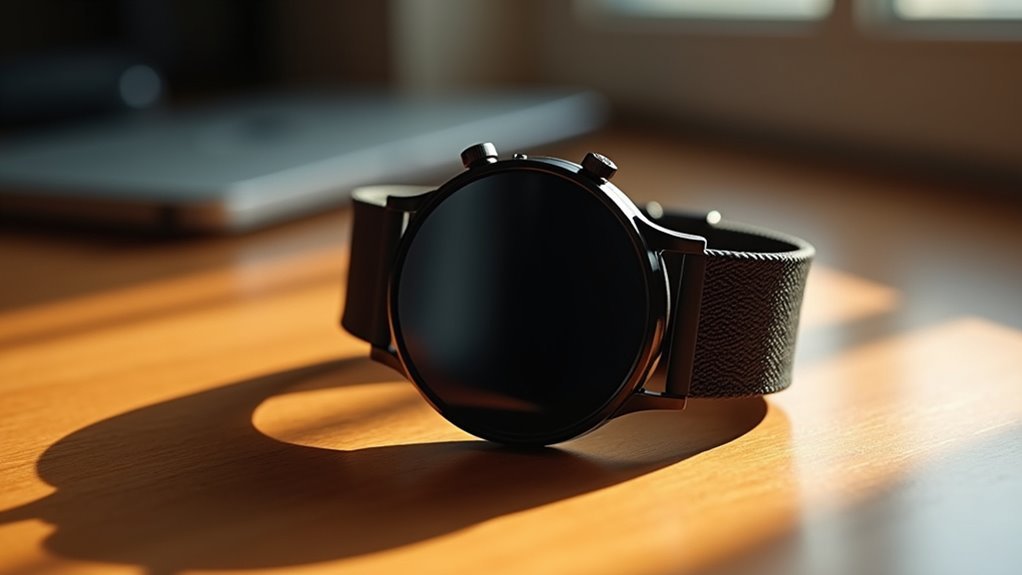
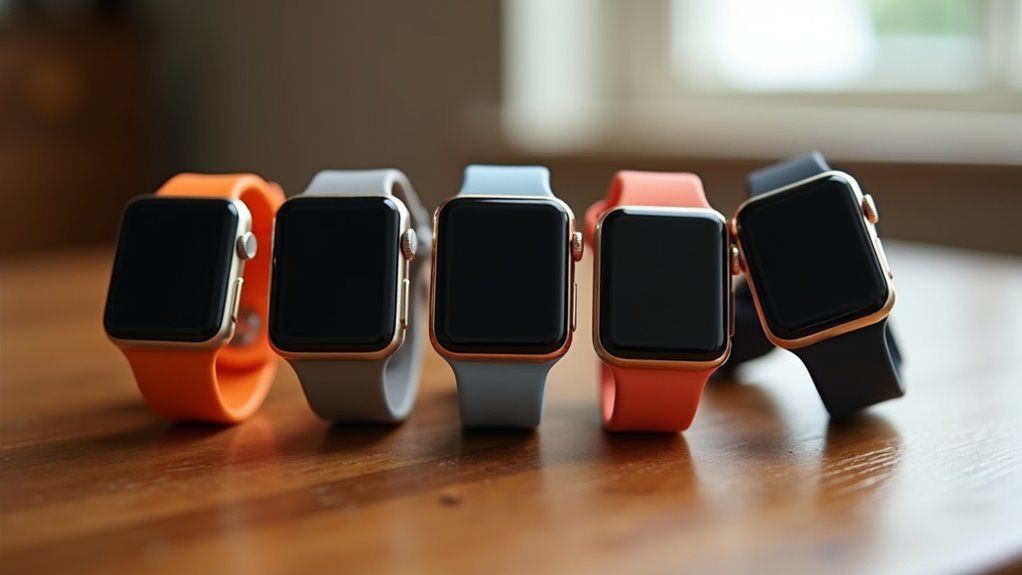
Leave a Reply